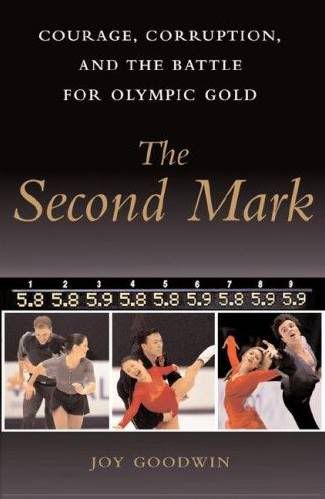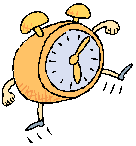I’m thrifty, even cheap, but I don’t resort to home dentistry. Sure, I brush my teeth, and I even floss sometimes, but I leave the root canals and fillings to my dentist. My teeth’s good health is important to me: I don’t want rotten, misshapen teeth. I want to chew food without pain and I don’t know the first thing about giving myself Novocain. That’s why I see a professional.
I’m the same way with figure skates. I just don’t know how to fit them on my own; although, I would love a shot of Novocain when it comes to paying for them.
Let’s say, for instance, a person orders her daughter’s figure skating boots and blades online. Being a practical soul, she orders the figure skating boots one size larger for her daughter because the kid is still growing. Practical Mom wants the boot to fit her skater in a year. Practical Mom also bought a boot that’s a pretty high level because she expects her skater to advance quickly. She buys the figure skating blade online and mounts it herself at home. Then she takes the new skates to a local sporting goods store where they sharpen recreational blades.
Practical Mom wants to save money, but she’s doing it in the wrong way. Let’s see where she went wrong and how to make it right.
Ordering figure skating boots online. Sure, you can save money and order boots online, but you have to be cautious. You have to make sure that the foot measurements and foot tracings are done properly – many folks get it wrong. If you order your boots online, you don’t have the benefit of trying on several pairs from different manufacturers. You don’t know that one manufacturer’s boot has a narrow heel or that another has a wider toe box. However, ordering boots online can save you money, especially if the skater has stopped growing. In that case, order the same boot; it’s pretty simple.
How to make it right: Unless you’re very experienced with skate fittings, visit a reputable figure skate dealer for a good fit. If you must order online, call the place you’re ordering from and ask them to walk you through the measurement and foot tracing process. See if they can recommend a certain boot for you based on the measurements.
Ordering a boot that’s too big. Practical Mom knows her kid’s growing, but what she doesn’t know is that the sides of the figure skating boot are reinforced at points that correspond to a skater’s foot size. If a skater is too small for the boot, the non-reinforced areas will take the impact. Renee from Rainbo Sports said that this kind of wear actually makes the boot break down, or crease, faster than a boot that fits well. Practical Mom thinks she’s smart to order a size too big, but really, she’ll be buying new boots sooner.
Boots that are too big also cause foot problems, Renee said. A skater might compensate for the boot’s size by gripping the sole with her toes, which causes foot pain. Her heel might slip in the back and cause a bump on the heel. She could develop painful calluses, too.
How to make it right: Buy the boots that fit your skater’s feet. You can maybe go up a half size, but don’t go up any further than that. Remember that boot sizes don’t correspond to shoe sizes and every figure skating boot manufacturer has a different size chart. You must measure.
Ordering a figure skating boot that’s too advanced. Practical Mom dreams of doubles and thinks that the heavier the boot, the better her skater will perform. This is a lousy idea. Your skater will skate like she’s in cement shoes because the boot’s too tough for her. If you want your skater to quit, buy a boot that’s way too stiff.
How to make it right: Your skater needs to build up her legs and her feet in order to tolerate an advanced boot, Renee said. You’re better off increasing the boot incrementally than jumping from the rental skates your skater used in Basic 4 to a skate that kids doing triples require.
Skipping the heat molding step. I think Practical Mom skipped this step because she doesn’t have a convection oven at home. Few people do. You can’t heat mold a figure skating boot in a conventional oven, so don’t even try it. Heat molding figure skating boots is a fabulous thing. It molds the boot to the skater’s foot and smoothes the break-in process for the skater. Heat molding reduces painful blisters, rubbing, and even scars.
How to make it right: If you have ordered your boots online, take them (and your skater) to a skate shop. Dress your skater in her skate socks, too. Request that the shop heat mold the boot. They’ll probably charge you for it, but it’s worth it.
Mounting the figure skating blade herself. You’d think that mounting a figure skate blade to a boot is as simple as drawing a straight line down the center and screwing the blade down on top of the line. However, even a small variance in the mounting can make holding edges and spins difficult for your skater. If you try to adjust the mounting, you’ll weaken the sole and invite water damage. Better to get it right the first time.
How to make it right: Again, if you’ve ordered the boots online, take them into a reputable dealer for the mounting. Yeah, they’re going to charge you, but you’ll save your skater a lot of frustration in the long run and have a more solid boot.
Inexpert figure skate blade sharpening. Blades are pricey and have only so much life in them. An inexpert sharpening can ruin a blade by taking off way too much metal or rounding the blade à la hockey skates. Blades cost $150 on the cheap end and $500+ on the expensive end. For my money, I want the most life out of that bugger.
How to make it right: Take that blade to a reputable skate sharpener. I know – it’s hard to know who sharpens correctly. Ask around. People will tell you. (Someday I’ll write a post about how to know if a sharpening is good or not. Until then, ask around.) I drive Ice Girl’s skates to a shop 90 minutes away because I know that Renee at Rainbo Sports sharpens well. You know I’m cheap, but I’m also not willing to risk my daughter’s Vision blade on just anyone. That’s $500, people. O.K. I bought it used, but still. I’m not going to pay for the local used sporting goods store or hockey shop to ruin it.
The bottom line: scrimping on skates isn’t really saving you much. Look. I want to save money as much as the next person. Perhaps more than the next person: I adore bargains. But, I save money elsewhere: I sew dresses (you can buy them online), I make Ice Girl practice moves on cheap, empty public sessions, and I bought used blades (with Renee’s approval).
Update: From reader Anonymous: The recommendation charts are somewhat helpful, but as a skate tech who works with skaters for a living, I can tell you the charts are not always 100% on the money. The charts don't usually take into account the skaters body size, weight, hours per week he/she skates, how he/she breaks down boots, etc. I have customers who are 65 lbs. and working on Double Axels and the boot I recommend for them is not going to be the same as the boot for a 150 lb. man working on the same jump. Also, there is a major difference between a skater who is a "test" skater at, say, the Intermediate level, and an Intermediate lady who qualifies for Junior Nationals. So I always look at the "whole picture", not just the chart.
Update: From reader Helicopter Mom: Take the coach's advice too. They have WAY more knowledge about all kinds of skates than the other moms at the rink.
Update: From reader Ethelapple: Heat molding is great -- and so is "bumping out" the boot to get a little extra time before having to buy that next pair!
Update: From reader Anonymous: In general, I have found that an excellent pro-shop may have better boot and blade fit information than the coach.
What do you think? Let me know if you think I’m way off base with this one. Better yet, let me know if there’s a way to save money on figure skates that I don’t know about. Have a horror story? Share that, too!












